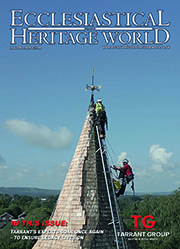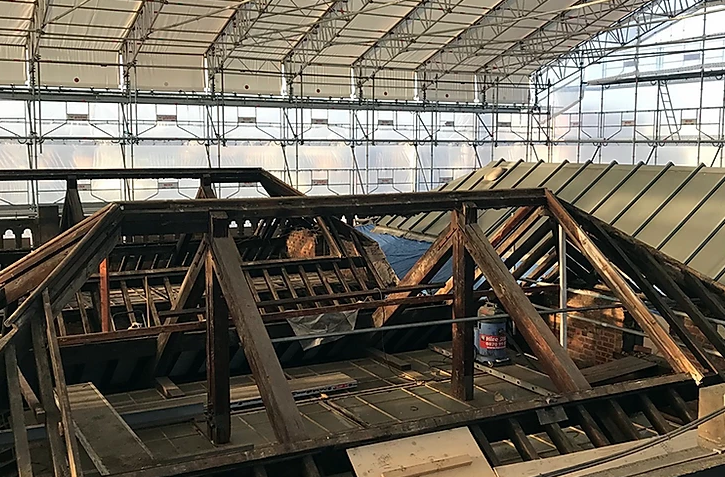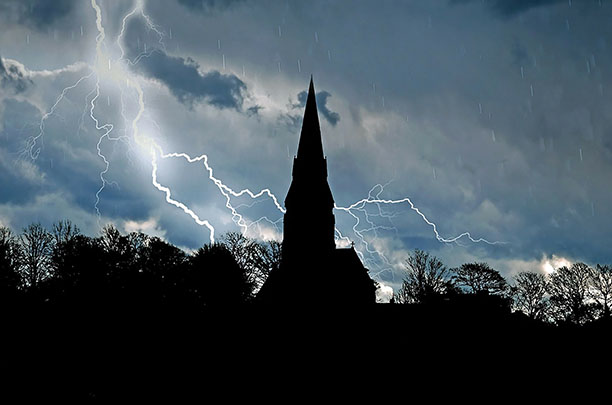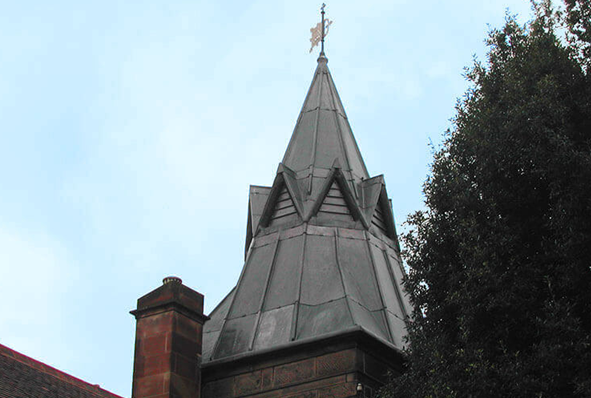Heritage Roofing
Heritage roofing - maintaining our iconic buildings
The UK is home to some of the most iconic buildings in the world, from stunning churches and cathedrals to historic stately homes. Each and every one of these remarkable feats of architecture requires regular maintenance to ensure they remain in the very best condition, allowing them to be enjoyed for generations.
Lightning Protection
When lightning strikes are you protected against this act of God?
The issue of lightning protection in churches is one that has exercised this publication for many years. In this four-part series of spotlights on the issue we will be revisiting various aspects of the subject, beginning with an overview of current thinking.
Traditional Lime
Lime: it’s better for buildings – and for the environment
It is now fairly well known that cement is not good for old buildings and that lime mortar should be used. But why? What are the advantages and what are the disadvantages? In order to begin to answer those questions it is necessary to understand the nature of traditional building, the process by which buildings used to be built, and how it differs from modern construction, the process by which we build today.
Audio Visual
Audio visual equipment in church buildings
This guidance is issued by the Church Buildings Council under section 55(1)(d) of the Dioceses, Mission and Pastoral Measure 2007. As it is statutory guidance, it must be considered with great care. The standards of good practice set out in the guidance should not be departed from unless the departure is justified by reasons that are spelled out clearly, logically and convincingly.
Read More...
CRE Events
Churches are coming under starter’s orders for CRE 25
Churches across the nation are beginning to make preparations for their visit to Christian Resources Exhibition’s CRE 25.
Insurance
You need to ensure that reasonable precautions are in place at your church to keep it safe for those who use it. To do this, you need to think about what might cause harm to people.
You will then need to decide if the precautions already in place are adequate. If they are not, you may need to identify further action to prevent any danger. When done formally, this is known as a risk assessment.
LPOW Grants
£23 million government package to support restoration of thousands of listed places of worship
Heritage Minister Sir Chris Bryant has announced that the Listed Places of Worship Grant Scheme will be extended into the next financial year, providing £23 million so that thousands of historical buildings, including churches, synagogues, mosques and temples, can carry out restoration work.
Lead Roofing
Lead is one of the oldest materials in the roofing industry and is still commonly used throughout the world today.
Lead roofing is a traditional roofing method which has been used in the industry for hundreds of years, and is therefore proven to be extremely reliable. Lead roofing, and sand-cast lead, in particular is ideal for old buildings such as churches or historical renovations, whereas milled lead roofing is a mass-produced alternative, used for precision and accuracy in homes and commercial buildings alike.
Home
CHURCHES: HOW TO READ THEM
A new 6x30 series for BBC Four Churches: How To Read Them presented by author Richard Taylor, examines how the imagery, symbols and architecture of Britain’s Churches have inspired, moved and enraged people down the centuries.
Richard believes that we’ve forgotten how to read the language of these buildings but that if we know how, we can connect directly with our ancestors’ deepest hopes and fears. He rejects the lazy clichés that reduce churches to little more than dusty museums, or to some sort of code for a wannabe Dan Brown to crack. Richard believes they’re much more than that...
The series is about understanding what we see in the churches of Britain – how their different styles reflect changing ideas of God, salvation, living and dying. Visiting some of Britain’s finest churches, Richard's journey is touched with his insight, humour and sense of wonder at what he sees and interprets.
How To Read a Church is a BBC Vision Production, the Executive Producer is Bill Lyons and the Series Producer is Jonathan Mayo. The series will be transmitted on BBC Four, starting Wednesday, September 1st at 8.30pm.
Episode One:
Dark Beginnings
In the beginning there were no churches. Richard explains how they were first built to protect the altar and the most important Christian rite of all – the Eucharist. Richard visits Britain’s finest early medieval churches to untangle the mystery of why the Anglo-Saxons and Normans seem to have been unwilling to shake off their pre-Christian past and to have continued to fill their sacred buildings with mysterious pagan images. An ancient book in an Oxford library helps Richard find an answer.
Episode Two:
Medieval Life
Richard Taylor uncovers evidence that shows how and why our parish churches came to play such a crucial role in the everyday life of the Middle Ages. He looks at how humorous wall paintings and intricate carvings were used to teach moral lessons and how carved angels in such spectacular churches as Blythburgh, Suffolk, were used to create a heaven on earth. He finds how rites such as baptism and the largely forgotten ritual known as “the churching of women” offered people protection from the cradle to the grave. And he discovers how - even today - your local pub may have an unexpected bond with your parish church.
Episode Three:
Medieval Death
The medieval church cannot be understood without recognising that death was at its heart. Richard Taylor shows us how churches were designed to give medieval people a way to escape death, with their Judgement scenes, cadaver tombs and graphic depictions of the crucifixion. He explains why scenes of suffering on the cross became so prominent and why the instruments used in the persecution of Jesus were depicted in the decoration of windows, floors and walls at such remarkable sites as Malvern Priory in Worcestershire. Richard explains the medieval obsession with purgatory and how this again transformed our churches with the building of elaborate “chantry chapels”, where Masses could be said to ease the journey of departed souls into heaven.
Episode Four
Reformation: Chaos and Creation
This was an age of destruction that still leaves its mark on our churches today. With the help of art historian Sister Wendy Beckett and a spectacular stained glass window, Richard Taylor tries to understand the intense medieval devotion to the Virgin Mary and how this fuelled the anger of the Reformation that followed. Richard ‘reads’ a ruined church and explains how it was not Henry VIII but his boy-king successor, Edward VI, who was responsible for the greatest changes in the Reformation. Richard also traces how the Book of Common Prayer and the translation of the Bible into English transformed the way that the English worshipped and the appearance of their churches. Richard travels to Burntisland in Fife, whose square-built church was a radical attempt by the Scots to break with their Catholic past.
Episode Five:
Restoration and Reason
Church life in the eighteenth century is often thought to have been genteel and rather dull, but Richard Taylor finds that churches in this “Age of the Enlightenment” reflect the intellectual excitement, the vigour and the potential for conflict of a turbulent time. Richard shows how the symbols in even the most everyday parish church reveal the ever-closer identification between Church and State and he tries out the extraordinary triple-decker pulpit at St Mary’s in Whitby. In a lightning tour of the London churches of Sir Christopher Wren and Nicholas Hawksmoor he discovers how they reflect the latest scientific insights and archaeological discoveries of the age. And in the startling simplicity of Baptist and Methodist chapels and meeting houses he taps into the burgeoning spirit of dissent that brought the monopoly of the parish church to an end.
Episode Six:
The Victorians and After
In the final episode Richard Taylor discovers how - at the height of the industrial revolution - medieval imagery and ritual make a surprise return to Victorian places of worship and plunge the Anglican Church into conflict. Richard retraces the controversy surrounding this “Oxford Movement” of Anglo-Catholics and explores their finest churches. He shows how some of its most fervent supporters, including William Morris, had a change of heart about the radical re-structuring that it brought to ancient buildings. But the 20th century would bring even more powerful changes. Richard sees how the impact of war is reflected on imagery in our churches and how the First World War brought a return to another medieval practice – the commemoration of the dead. Richard visits a 21st century church that looks more like a rock venue - and he finally finds the perfect place to reflect on what he has learned from his reading of Britain’s churches.




















